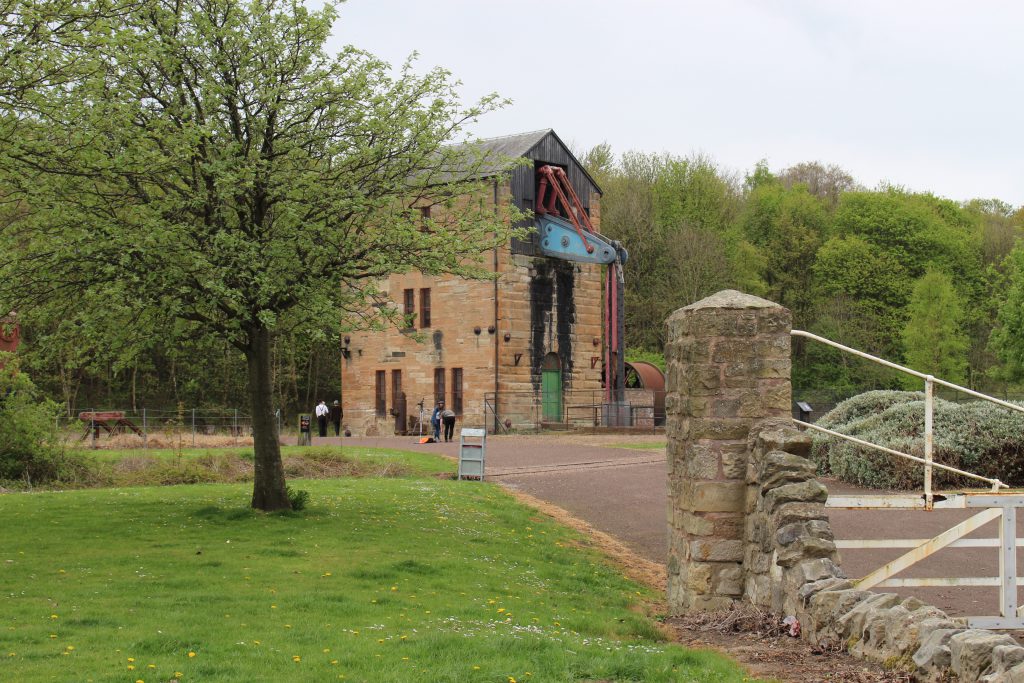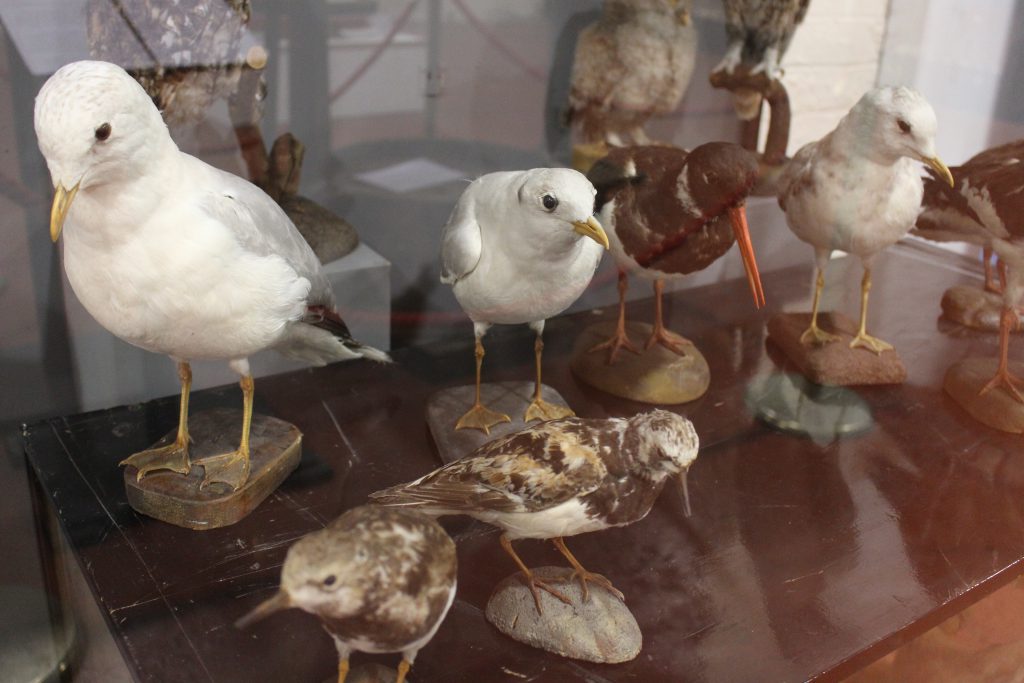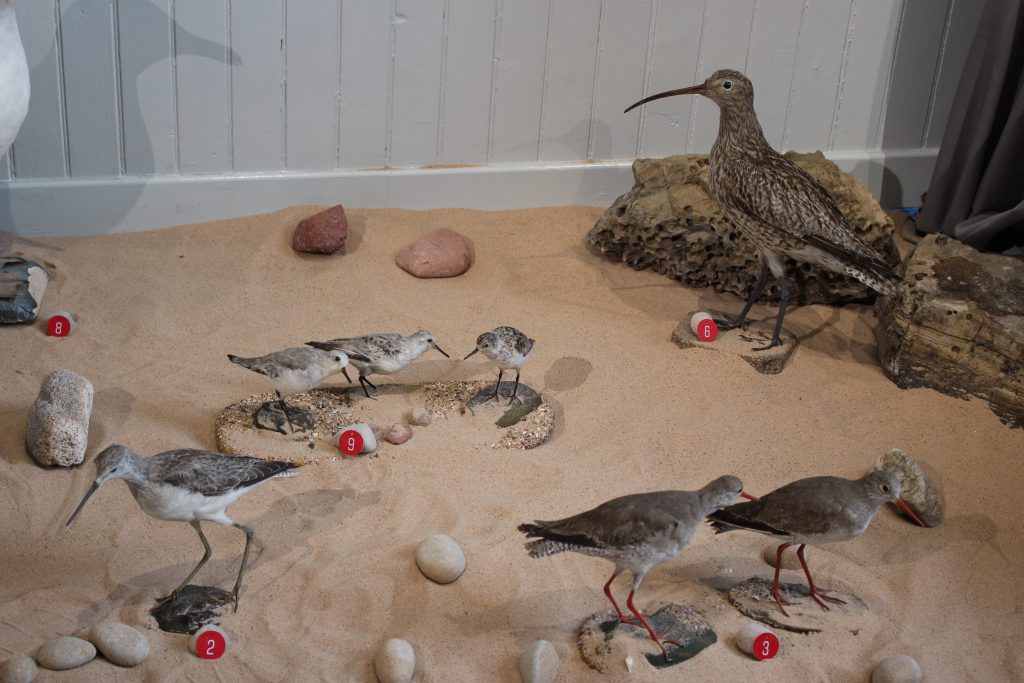National Museums Scotland’s John Ellerman funded project, reviewing natural science collections across Scotland, began by compiling a list of organisations holding fossils and other natural science material.
The next task was to see these collections first-hand in order to document their type, storage and use. Visits were made in no particular order, although I tried to start small and within easy reach of Edinburgh.

My first visit was to Prestongrange Museum, an open-air museum of industrial buildings and machinery brought to the site for preservation – not the most obvious place to find natural science specimens. However, hidden away in one building (unlocked on request) was a small collection of taxidermy (‘stuffed’ animals) and entomology (butterflies and other insects).
The eider ducks and oystercatchers were familiar, being birds common to the Scottish seashore that I had seen on the nearby coast. Others, such as the barn and tawny owls, were also from Scotland but less familiar due to their nocturnal habit and more reclusive lifestyle.

In the same afternoon I continued to North Berwick and the Coastal Communities Museum. Among displays on lighthouses and local history I found taxidermy seabirds in a beach and cliff scene with an accompanying activity to match the birds to a list of names on a sheet provided.
In another room was a display of the rock types that underlie East Lothian, with details of how volcanic activity and glaciation influenced the local landscape.

Two visits in and I was yet to see a fossil in my fossil-focused review. The next day’s visit, to the Cockburn Museum, University of Edinburgh, would change this. The collection contains thousands of fossils including a wide range of fish, molluscs, plants and other types of life, collected over the last few hundred years, as well as samples used for research and more waiting to be processed for scientific study. I spent several hours looking through drawers and displays before deciding that this would be one I needed to come back to.
Reflecting on my first week of visits, I had seen the extremes of small and large collections, collections with no fossils and collections with a huge number of fossils, as well as examples of other natural science material. It was good to have made a start on the visits and to have gained an idea of what I might find, although the immensity of the task ahead was becoming more evident. I was looking forward to the challenge and preparing for the following week when I would be on the road again to see more natural science collections.

